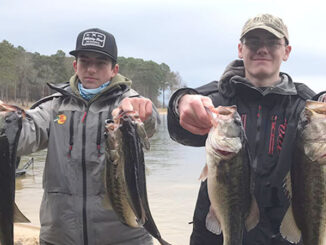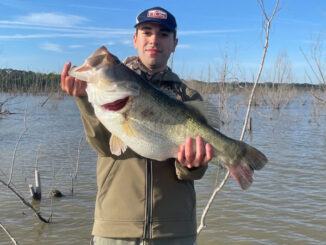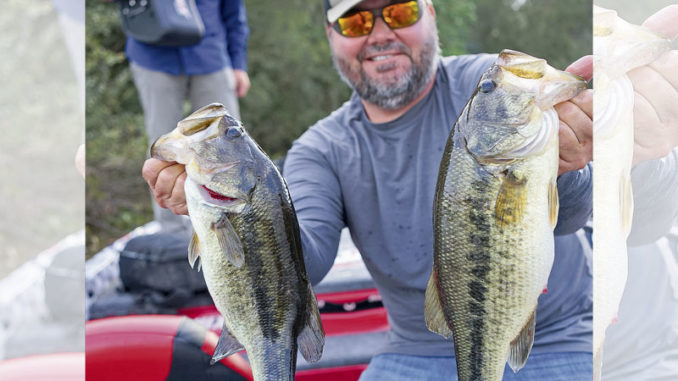
Greg Hackney of Gonzales, a Major League Fishing pro, isn’t one to gripe about weather conditions. At the end of the day, he knows he has to consistently catch bass. Excuses don’t cash checks.
One of those conditions is muddy water.
Some anglers are rattled by the sight of it, but Hackney’s approach is founded on simple beliefs: for largemouth bass to hit a bait, they must see it, and in muddy water, the light penetrates only about 10 inches under the surface.
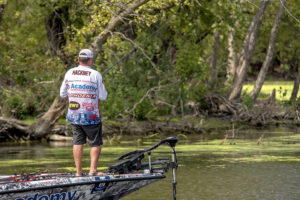
“When holding on a piece of wood or a cypress tree, bass will still be high in the water column. Everything is blacked out beneath that depth,” Hackney said. “Whether you’re fishing in dirty or clear water, a largemouth is a sight-oriented feeder. He’ll only be as deep as the light is penetrating, because if he can’t see the forage, he can’t find it to attack it.”
There are times when bass will pull out into slightly deeper water, but still hold within 10 inches from the surface.
Leave it on the trailer?
Hackney is not a fan of “trashy, dirty water.” That’s his description of fresh, muddy water still rife with sediment throughout the water column. He’s convinced that bass don’t want to be anywhere near that kind of water, because it suffocates them. Once that water takes on a cloudy tinge, albeit still dirty, he’ll regain his confidence in an area.
Don’t bother fishing muddy water on cloudy days or in the dark; he said it robs the opportunity for natural light to work its magic. If Hackney is in a tournament and has to fish under those conditions, he’s going to the shallowest inhabitable water possible, since the sun will most likely penetrate that area first.
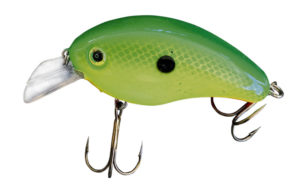
Persistence is key
The biggest mistake that Hackney sees anglers commit is strictly mental: they lack perseverance. Hackney makes repetitive casts to a target from a variety of angles. Anglers need to understand that under such conditions, the strike zone of a bass isn’t much better than 10 inches. Even when the bite is hot, he’ll continue changing his casting angles to keep fish biting and may utilize the T-H Marine HydroWave to keep them fired up when the bite begins to be fall off.
The war chest
Hackney believes that reaction baits retrieved steadily are the deal in muddy water; it isn’t the time to be imparting action to a bait.
“You don’t want to move the bait erratically; they’ll miss it since they can’t see as well,” he said. “The fish will tell you the rate of speed, but I’ll start slow.
Baits that displace the most water also get the nod.
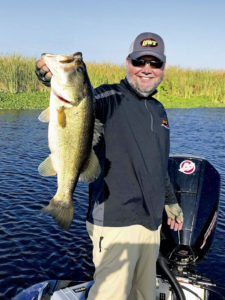
The lazy, side-to-side wobble and pronounced rattle of a chartreuse/black Strike King 4s requires Hackney to fish the bait more slowly. So he uses a Lews BB1 Pro baitcasting reel with a 6.3:1 retrieve ratio, spooled with 12-pound Gamma Edge fluorocarbon on a 7-foot medium action, Lews Hack Attack freshwater casting rod.
A spinnerbait may have escaped the interest of some, but Hackney always has one tied on. He still fishes old, production models made by Strike King featuring a small, gold Colorado and turtle blade combo outfitted with a chartreuse skirt. Ever the tinkerer, Hackney also builds 3/8- to ½-ounce spinnerbaits with an orange Colorado blade and a gold turtle blade in the rear. An orange Colorado blade has long been a secret of many pros when fishing muddy water.
Getting jiggy
Hackney’s favorite mousetrap is the Strike King Thunder Cricket bladed jig.
“Every strike feels like they’re trying to rip the rod out your hands,” he said.
To be able to cover water while keeping the bait high in the water column, he adds a bulkier Strike King Perfect Skirt and a Rage swimmer trailer. On a half-ounce bladed jig — especially when bass are feeding on shad — a 4.75 Rage Swimmer gets the nod over the standard 3.75 model.
For anyone who has followed Hackney’s career, it comes as no surprise that he’s always looking for opportunities to fish a jig.
“If I can catch them on a jig, I’ll catch all of them,” he said. “The hookup is better with a jig than a Texas-rigged bait.”
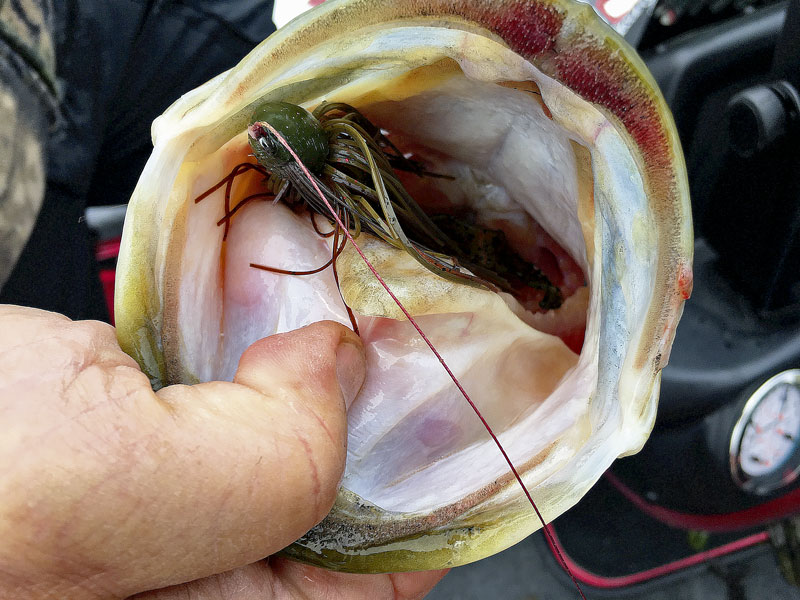
Hackney will fish a ½-ounce Strike King Hack Attack jig, and to slow the rate of fall, he’ll add a Strike King Rage Tail Lobster trailer because it displaces more water than a Rage Craw. Hackney wants a compact presentation, so he’ll trim the bait at the second or third knuckle before threading it onto the jig.
“You aren’t trying to get them to react,” he said. “It’s not like flipping in clear water where you want them to run out and get it. You want to let it hang in front of the bass, giving them the opportunity to see it.”
Not too heavy
Many anglers might believe a ½-ounce jig is too heavy in shallow water, but Hackney disagrees.
“Consider this: a ½-ounce jig with a Rage Craw has the same rate of fall as a Rodent rigged on a ¼-ounce slip sinker,” he said. “A 1/2-ounce jig with a Lobster falls at the same rate as a Magnum Rage Bug rigged on a 5/16-ounce sinker. That Lobster moves a lot of water on a ½-ounce jig, I’m a big fan.”
When flipping or pitching a bait weighing ¾-ounce or less, Hackney opts for the 7-foot-6 model of his signature series Lews flipping stick, and the 7-foot-11 model for anything heavier. The only reel he needs is a Lews Custom Pro — 8.3:1 retrieve ratio — spooled with 65-pound Gamma Torque braid, which also helps slow the rate of fall.
